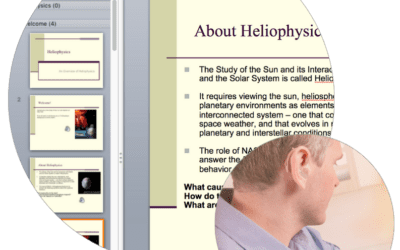How to overcome the skill, cost, and time barriers to producing accessible eLearning courseware for Federal and State Government Agencies
eLearning is the cornerstone of training and education for federal and state government agencies. Ensuring that eLearning content is accessible to all individuals, including those with disabilities, remains a significant challenge.
Streamline elearning content production – the challenges of creating accessible e-learning content at scale
Understanding Accessibility Requirements
Federal and state agencies are mandated to comply with Section 508 of the Rehabilitation Act, which requires electronic and information technology to be accessible to people with disabilities. ELearning content must meet the Web Content Accessibility Guidelines (WCAG) 2.0 Level AA standards. However, understanding and implementing these requirements can be daunting for individuals and organizations unfamiliar with accessibility standards.
Technical Complexity of Retrofitting Content
Most eLearning authoring tools burden the content author with knowing everything about Section 508/WCAG. Authors must be well-versed in accessibility standards and technical requirements to ensure compliance. The complexity of compliance makes this approach a non-starter for anyone other than seasoned programmers. (Re)creating accessible eLearning content includes multiple technical challenges. Here are just a few…
- Multimedia Accessibility: Videos and audio must have captions and transcripts for users who are deaf or hard of hearing. Descriptive audio may also be necessary for visual content.
- Interactive Elements: Quizzes, drag-and-drop activities, and simulations must be operable using keyboards and assistive technologies.
- Readability: Content must be readable by screen readers, requiring special tagging to ensure logical navigation and reading order.
- Visual Design: Adequate color contrast and the use of color must be considered to ensure information is not conveyed by color alone.
Resource Intensive
Developing accessible eLearning content usually requires additional resources in terms of time, budget, and specialized skills – including hiring accessibility experts, extending development and testing time, and potentially higher software or tool costs.
Creating Good Training is Hard
Subject Matter Experts (SMEs) or those close to the content often struggle to summarize or abstract detailed information into coherent eLearning courseware. Typically, SMEs provide raw content, such as PowerPoint decks or audit findings, that dive into hyper-detailed explanations early on, making it challenging to create structured and engaging eLearning courses, resulting in content that is too detailed and specific, missing the broader learning objectives.
Accessibility Requires Continuous Monitoring and Updating
Accessibility is not a one-time task. eLearning content must be regularly updated to remain compliant, especially as technologies and standards evolve. This requires ongoing attention and resources.
Legal and Compliance Risks
Failure to comply with Section 508 can expose organizations to legal risks, including complaints and lawsuits. This adds a layer of compliance necessity that can be daunting for many organizations.
Training and Awareness
Developers and content creators often need to be trained on accessibility standards and best practices. A lack of awareness and understanding of accessibility principles can lead to non-compliant eLearning materials.





